
MULTIDIMENSIONAL SYSTEMS AND SIGNAL PROCESSING
Scope & Guideline
Advancing Knowledge in Multidimensional Systems and Algorithms
Introduction
Aims and Scopes
- Multidimensional Signal Processing:
Research on algorithms and methods for processing signals that are not limited to one-dimensional forms, including time-frequency analysis and image processing. - Adaptive Filtering and System Identification:
Exploration of adaptive filtering techniques and methodologies for system identification, particularly in dynamic environments where system parameters change over time. - Medical Imaging and Diagnostics:
Development of novel approaches for medical image processing and diagnostics, utilizing advanced algorithms for image enhancement, feature extraction, and classification. - Machine Learning and Deep Learning Applications:
Integration of machine learning and deep learning techniques into signal processing frameworks, focusing on applications such as classification, detection, and recognition tasks. - Signal Estimation and Reconstruction:
Techniques for estimating and reconstructing signals from incomplete or corrupted data, including compressive sensing and advanced filtering techniques. - Robustness in Signal Processing:
Research on improving the robustness of signal processing algorithms against noise and other disturbances, ensuring reliability in practical applications.
Trending and Emerging
- Deep Learning for Signal Processing:
There is a growing emphasis on using deep learning techniques for various signal processing tasks, including image classification, anomaly detection, and feature extraction, showcasing the trend towards data-driven methods. - Integration of IoT and Signal Processing:
Research that combines signal processing with Internet of Things (IoT) applications is on the rise, focusing on efficient data transmission, sensor networks, and real-time processing. - Advanced Medical Imaging Techniques:
Innovations in medical imaging, particularly those integrating machine learning for enhanced diagnostics and image analysis, are increasingly prevalent, indicating a focus on healthcare applications. - Real-Time Processing and Surveillance Systems:
Emerging themes include real-time processing for surveillance and monitoring systems, reflecting the demand for immediate data analysis in security and safety applications. - Cross-Modal Signal Processing:
Increased attention is being given to cross-modal signal processing, where data from different modalities (e.g., visual and auditory) is integrated for improved analysis and understanding.
Declining or Waning
- Traditional Signal Processing Techniques:
There is a noticeable decrease in papers focusing solely on classical signal processing techniques, as newer methods leveraging machine learning and deep learning become more prevalent. - Basic Image Processing Methods:
Research on fundamental image processing methods, such as basic filtering and histogram equalization, appears to be declining in favor of more complex, adaptive techniques that utilize advanced algorithms. - Stand-alone Hardware Implementations:
Papers that solely discuss hardware implementations without integrating novel algorithms or methodologies are becoming less common, as the focus shifts towards software-driven solutions and hybrid approaches. - Theoretical Frameworks Without Application:
Theoretical explorations that do not present practical applications or validations are less frequently published, as the journal emphasizes applied research that demonstrates real-world relevance.
Similar Journals
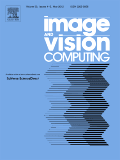
IMAGE AND VISION COMPUTING
Exploring the frontiers of image and vision science.Image and Vision Computing, published by Elsevier, serves as a leading international journal focused on the dynamic fields of computer vision, pattern recognition, and signal processing. With its esteemed Q1 category rankings in these areas and an impressive standing in Scopus metrics, where it ranks 19th in Computer Vision and 23rd in Signal Processing, this journal has firmly positioned itself at the forefront of academic research and innovation. Established in 1983, it continues to publish cutting-edge research that drives advancements in technology and applications across various domains. The journal is committed to disseminating high-quality, peer-reviewed articles that address significant challenges and propose novel solutions, making it an essential resource for researchers, practitioners, and students alike. While not an open access journal, Image and Vision Computing offers a wealth of valuable insights into the ever-evolving landscape of visual computing technologies.
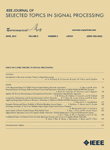
IEEE Journal of Selected Topics in Signal Processing
Exploring Innovative Pathways in Electrical EngineeringIEEE Journal of Selected Topics in Signal Processing is a premier academic publication dedicated to the advancement of knowledge in the field of signal processing. Published by IEEE-INST ELECTRICAL ELECTRONICS ENGINEERS INC, the journal boasts an impressive impact factor that places it in the top tier of its category; ranked Q1 in both Electrical and Electronic Engineering and Signal Processing for 2023. Given its esteemed standing, the journal serves as a vital resource for researchers, professionals, and students alike, providing cutting-edge insights and developments that shape the future of signal processing. The journal encompasses a wide array of topics relevant to the evolving landscapes of electrical engineering and computer science, with particular significance in innovative applications and methodologies. As a platform for disseminating high-quality research, this journal remains essential for those seeking to stay at the forefront of this dynamic field. You can explore the latest contributions and findings, benefiting from the journal's influential status in the realm of signal processing.

EURASIP Journal on Advances in Signal Processing
Empowering Research in Electrical Engineering and Beyond.EURASIP Journal on Advances in Signal Processing, published by Springer, is a premier open-access journal that has been at the forefront of research in the field of signal processing since its inception in 2001. With a focus on advancing the disciplines of Electrical Engineering, Hardware and Architecture, and Signal Processing, this journal plays a crucial role in disseminating innovative findings and facilitating collaboration among academics and industry professionals. Ranking in Q2 for Electrical and Electronic Engineering and Q3 in both Hardware and Architecture and Signal Processing as per the 2023 category quartiles, it highlights the journal's commitment to high-quality research. The journal is indexed in Scopus, reflecting its reputable standing within the global research community. Researchers, professionals, and students are invited to contribute to and benefit from the wealth of knowledge and advancements presented in each issue, furthering their understanding and application of state-of-the-art signal processing techniques.

Journal of Signal Processing Systems for Signal Image and Video Technology
Exploring the Intersection of Technology and Methodology.Journal of Signal Processing Systems for Signal Image and Video Technology, published by SPRINGER, is a leading interdisciplinary journal dedicated to advancing research and development in the fields of signal processing, image processing, and video technology. With an ISSN of 1939-8018 and an E-ISSN of 1939-8115, this journal emphasizes both theoretical and practical applications, boasting a wide scope that ranges from control and systems engineering to hardware architecture. Since its inception in 2008, it has gained a solid reputation, reflected in its 2023 category quartile rankings—including Q2 in Control and Systems Engineering and Q3 in Signal Processing—demonstrating its significance within the academic community. The journal is underpinned by a commitment to open access, promoting broad dissemination of knowledge, and is particularly vital for researchers, professionals, and students looking to contribute to and stay updated in these rapidly evolving fields. With ongoing explorations into the convergence of technology and methodology until 2024, the journal stands as a crucial resource for the latest innovations and discussions in signal processing systems.
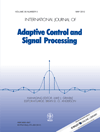
INTERNATIONAL JOURNAL OF ADAPTIVE CONTROL AND SIGNAL PROCESSING
Transforming Engineering Disciplines with Cutting-edge InsightsINTERNATIONAL JOURNAL OF ADAPTIVE CONTROL AND SIGNAL PROCESSING, published by Wiley, is a premier peer-reviewed journal dedicated to the advancing field of adaptive control and signal processing. With a consistent publication history since 1987, this journal serves as a critical platform for disseminating innovative research and developments that contribute to both theoretical and practical aspects of engineering disciplines, specifically within the realms of control systems, electrical engineering, and signal processing. Boasting a commendable impact with quartile rankings in Q2 for Control and Systems Engineering, Electrical and Electronic Engineering, and Signal Processing, it ranks #93 among 321 journals in Control and Systems Engineering with a 71st percentile in Scopus rankings, underscoring its significance in fostering academic excellence. Although it does not offer open access, the journal is accessible through institutional subscriptions and individual purchases, promoting an extensive reach to researchers, professionals, and students eager to stay at the forefront of adaptive technologies. Whether seeking to explore cutting-edge methodologies or to gain insights into real-world applications, readers will find this journal to be an invaluable resource in the dynamic landscape of engineering innovation.
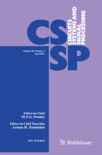
CIRCUITS SYSTEMS AND SIGNAL PROCESSING
Unveiling Trends and Technologies in Signal ProcessingCIRCUITS, SYSTEMS AND SIGNAL PROCESSING, published by Springer Birkhauser, is a highly regarded journal in the fields of applied mathematics and signal processing, boasting an impact factor that reflects its robust academic contributions. Established in 1982, this journal aims to disseminate cutting-edge research that bridges the gap between theoretical advancements and practical applications in circuit design, systems theory, and signal processing. With a Thomason Scopus ranking of Q2 in Applied Mathematics and Q3 in Signal Processing, it stands out as a leading resource for researchers, professionals, and students seeking to enhance their knowledge and innovate within these disciplines. The journal provides insight into the latest trends and technologies, making it an essential reading for those engaged in the development of signal processing methodologies. Although it does not offer Open Access options, it remains a critical repository of knowledge with deep relevance in today's tech-driven landscape.

IEEE Transactions on Signal and Information Processing over Networks
Connecting Minds: Unveiling the Future of Signal Processing.IEEE Transactions on Signal and Information Processing over Networks, published by IEEE-INST ELECTRICAL ELECTRONICS ENGINEERS INC, stands at the forefront of innovation in the fields of signal processing, computer networks, and information systems. With an impressive track record since its inception in 2015, this journal boasts a notable impact factor, placing it in the prestigious Q1 category in its respective fields, including Signal Processing and Computer Networks & Communications. Researchers and professionals will benefit greatly from its rigorously peer-reviewed articles that present cutting-edge discoveries and methodologies relevant to the ever-evolving landscape of network technology. Although the journal does not currently offer open access options, it remains a vital resource for advanced study and application, ensuring that researchers can stay abreast of the latest developments and trends shaping the industry. With Scopus rankings highlighting its competitive standing, this publication is an essential platform for disseminating meaningful scholarly contributions and fostering collaboration within the global research community.
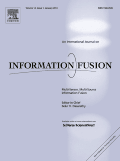
Information Fusion
Fostering Collaboration to Transform Information Science.Information Fusion is a premier journal published by Elsevier, specializing in cutting-edge research within the fields of hardware and architecture, information systems, signal processing, and software. With a significant impact factor, it remains at the forefront of academic discourse, boasting a remarkable Q1 ranking in each of its categories in 2023, which underscores its critical role in advancing knowledge and innovation in these domains. The journal, with ISSN: 1566-2535 and E-ISSN: 1872-6305, is dedicated to fostering collaboration and the dissemination of research findings that drive technological advancements and improve system efficiencies. Researchers, professionals, and students alike will find a wealth of valuable insights into emerging methodologies, trends, and applications. Designed to bridge the gap between theory and practice, Information Fusion invites contributions that enrich the academic landscape and provoke engaged discussions among the scholarly community.

DIGITAL SIGNAL PROCESSING
Advancing the Frontiers of Digital Signal ProcessingDIGITAL SIGNAL PROCESSING is a leading academic journal published by Academic Press Inc Elsevier Science, serving as a vital resource in the fields of applied mathematics, artificial intelligence, signal processing, and electrical engineering. With an impressive set of rankings, including a Q2 designation in multiple categories such as Applied Mathematics and Computer Vision and Pattern Recognition, this journal aims to disseminate high-quality research that addresses both theoretical and practical aspects of digital signal processing. Its rigorous peer-review process ensures the publication of original articles, review papers, and innovative applications, making it an essential platform for researchers and professionals dedicated to advancing this dynamic field. While currently not an open-access journal, it maintains a significant impact factor, reflecting its esteemed position within the academic community. The journal's ongoing commitment to exploring new trends and methodologies positions it at the forefront of digital signal processing research, driving both scholarly inquiry and practical application from 1991 to 2024.

Biomedical Signal Processing and Control
Exploring the frontiers of biomedical signal processing.Biomedical Signal Processing and Control is a premier academic journal published by ELSEVIER SCI LTD that stands at the forefront of the rapidly evolving fields of biomedical engineering, health informatics, and signal processing. With an impressive impact factor reflecting its scholarly influence and high standards of research, this journal has been recognized in the Q1 quartile category across multiple disciplines as of 2023. Specifically, it holds esteemed positions within Biomedical Engineering, Health Informatics, and Signal Processing, where it ranks in the top tier of its field on Scopus: #19/131, #21/138, and #47/303 respectively. Published continually from 2006 to 2024, the journal serves as a critical platform for researchers, healthcare professionals, and students, fostering innovation in signal processing techniques and their applications in biomedical systems. Access to cutting-edge research and methodologies makes it an indispensable resource for advancing knowledge and practice within these interdisciplinary domains.